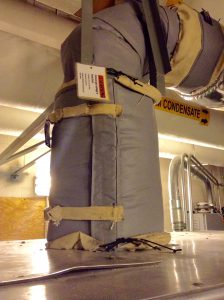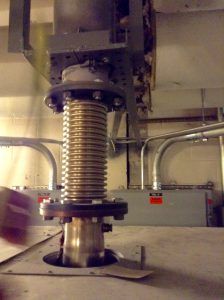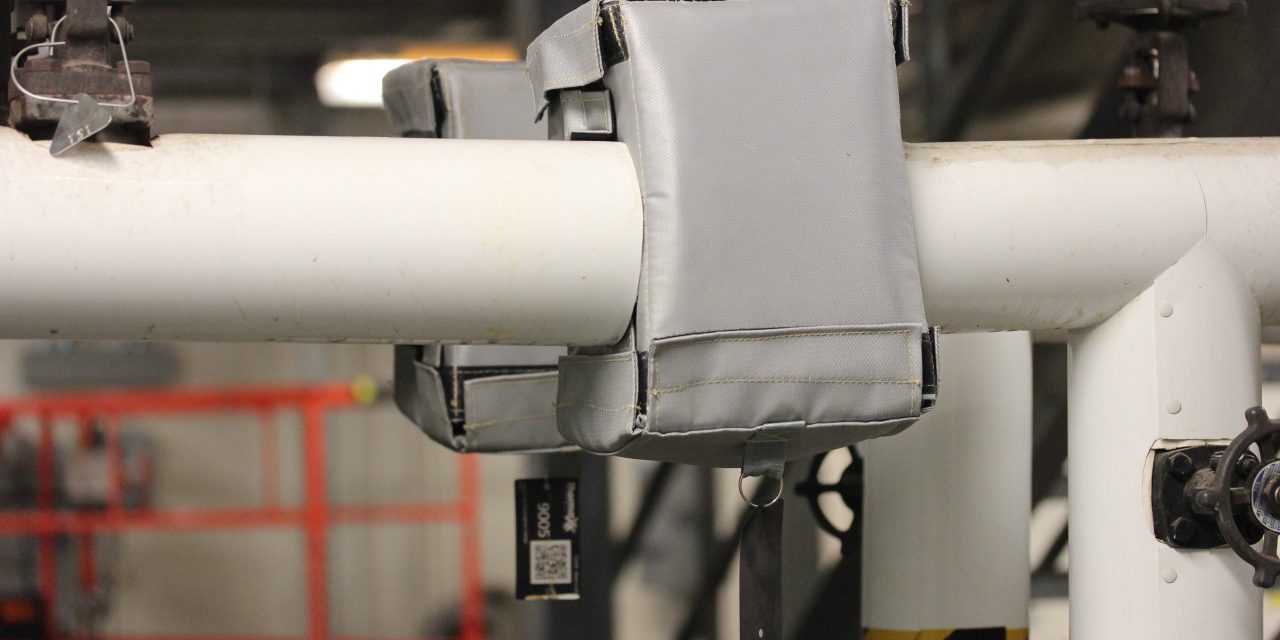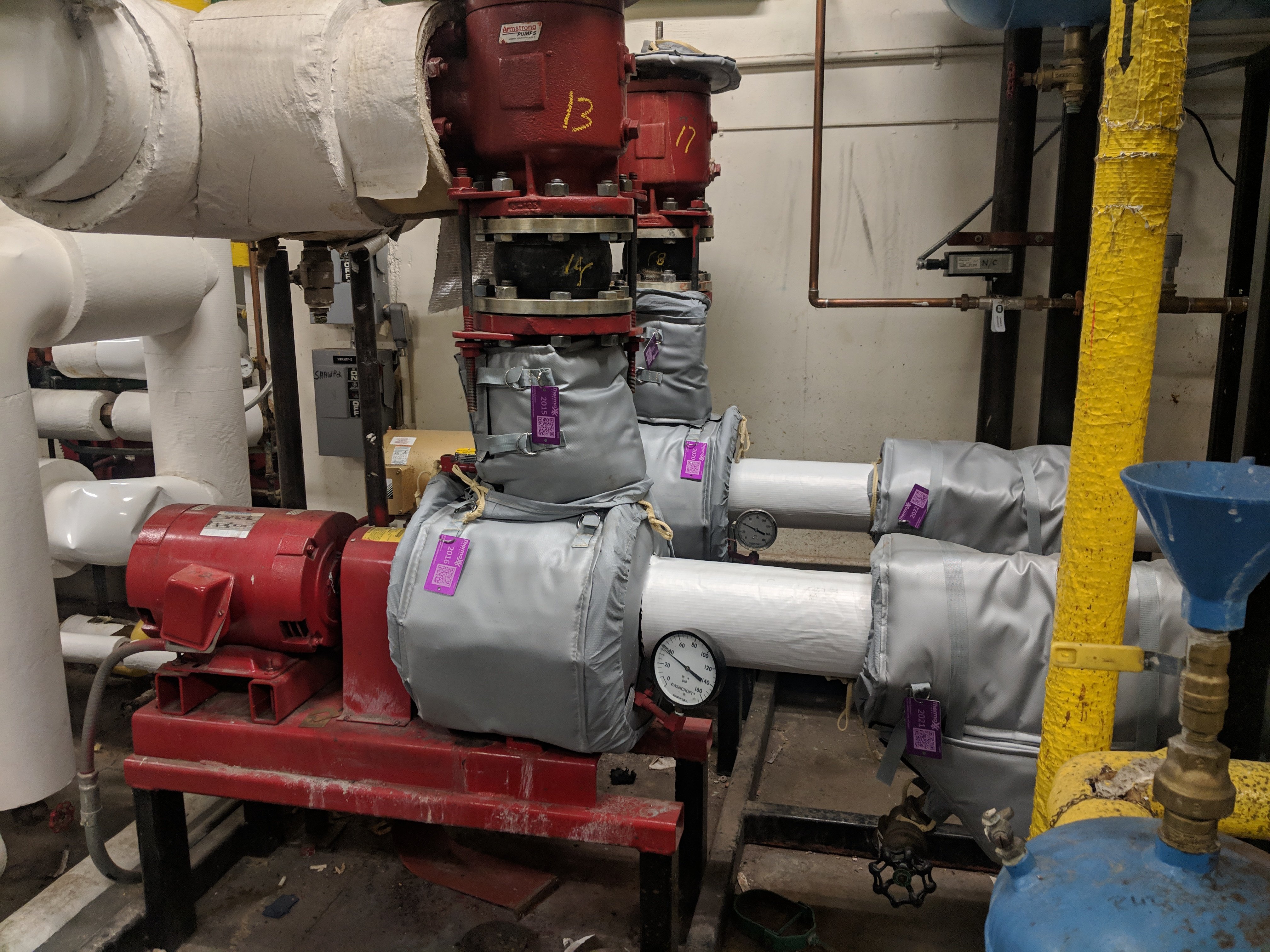High Temperature Insulation Blankets
This article was written by Chuck Murphy of Thermaxx Jackets
On this page:
- High Temperature Insulation Blanket Applications
- High Temperature Insulation Materials
- Insulation Blanket Design
- FAQs
- Learn More About High-Temperature Insulation Blankets
Are you looking into high-temperature insulation blankets for your components? To determine the best materials and design for your insulation, you first need to outline your application. High-temperature insulation blankets work in multiple industrial applications.
If you want to increase safety and lower energy costs, buy high-temperature insulation for your components. Most insulation can be custom-made to fit your application and components in the best possible way.
High Temperature Insulation Blanket Applications
Thermaxx manufactures insulation jackets for applications ranging from 600°F to 2500°F. Most commonly, you will see such high temperatures in these industrial applications:
- High-pressure steam piping
- Compressors
- Furnaces
- Boilers
- Kilns
- Welding
- Turbines
- Catalytic converters
- Cogen sites
- Ovens
- Exhausts
- Utility plants
- Flanges
- Refining or petrochemical plants
- Incinerators
- Various industrial processes
- Heat exchangers
- Dryers
- Expansion joints
Depending upon the temperature of the application, specific designs and materials need to be employed in manufacturing of a high temperature insulating jacket. If you have an industrial application, Thermaxx has an insulation jacket made from compatible materials.
|
Before High Temperature Insulation is Applied to Component |
After High Temperature Insulation is Applied to Component |
High Temperature Insulation Materials
Traditional materials and designs fail when used at high temperature. The first step in the hot jacket design is the materials selection. This process requires an understanding of the hot component, the components environment and the design of the jacket.
Factors that effect the materials used in a hot jacket are:
- Location: Inside, outside, steam pit/vault
- Environment: Steam, chemical, water
- Hot component design: Flanged, NPT, piping, lubrication ports
Typical materials used to manufacture hot jackets are:
Jacket Cover
| Vermiculite Coated Fiberglass Cloth | Good to 1500°F |
| Silica Cloth | Good to 1800°F |
| Wire Mesh | Good to 2300°F |
Cold Side
| Teflon Coated Fiberglass Cloth | Good to 550°F |
| Silicone Coated Fiberglass Cloth | Good to 500°F |
Jacket Insulation
| Ceramic | Good to 2400°F |
| Pyrogel | Good to 1200°F |
| Needled Fiberglass | Good to 1200°F |
Sewing Thread
| Kevlar | Good to 750°F |
| Fiberglass | Good to 1000°F |
| Kevlar Inconel | Good to 1800°F |
| Quartz | Good to 2000°F |
| Al2O3, SiO2, B2O3 | Good to 2500°F |
Insulation Blanket Design
The next step in designing a hot insulation jacket is analyzing the temperature of the hot component to be insulated, the ambient temperature where the hot part is located, and the desired surface temperature (touch temperature) of the insulating hot jacket. A professional will analyze these temperatures using a computer program developed by the National Insulation Association.
This program calculates the thickness of insulation needed to get a specific surface temperature for the jacket. For example, if the customer desires a surface temperature of under 125°F for a 600°F component, the program will tell the designer how thick specific insulation is needed.
The design of the jacket is next. The design will vary greatly depending upon the location, environment, and hot component to be insulated. Proprietary designs protect the materials from overheating as well as insulating the part. Proper placement of materials is critical to avoid thermal degradation.
Finally, the hot jacket is manufactured with a high-temperature thread using a quality manufacturing process.
Frequently Asked Questions
Do you want to know more about heat trace insulation? We've gathered a list of frequently asked questions to provide you with the answers you might need as you consider buying from Thermaxx.
1. How Effective Is Pipe Insulation?
Pipe insulation is highly effective when using the right materials for your application. Ensure the materials you choose can withstand the temperatures in your application. Proper installation is also key to protecting your pipes and other components from damage.
2. How Much Pipe Insulation Do I Need?
The amount of pipe insulation you need is dependent on the size of your components and the thickness required. In some cases, you will need much less or more — the need hinges on your specific application. At Thermaxx, we ensure you get the right amount of pipe insulation for your application.
3. What Type of Pipe Insulation Is Best?
The best type of pipe insulation will vary depending on your application. At Thermaxx, we offer various pipe insulation materials to meet many needs. Whatever you need, we can create an ideal solution.
4. What Kind of Pipes Need Insulation?
Pipes throughout numerous industrial applications benefit from insulation. High-temperature insulation jackets and blankets are ideal for covering pipes that will encounter extremely hot temperatures, such as those in a kiln, dryer, or furnace.
5. Does Your Product Have a Warranty?
At Thermaxx, we are proud to offer a five-year warranty on all the products we sell, including high-temperature insulation blankets.
6. Does High-Temperature Insulation Require Maintenance?
Thermaxx insulation is well-known for being low-maintenance. Little is needed beyond inspecting them regularly and ensuring they stay clean. They are also easy to put on and remove, allowing for easier maintenance of the piping itself.
Learn More About High-Temperature Insulation Blankets From Thermaxx
Do you need high-temperature insulation blankets? At Thermaxx, we offer high-quality products with five-year warranties. If you want a fast and convenient quote, our team is here to help. We provide turn-key solutions for all our clients. If you want to learn more about Thermaxx Hot Jackets, feel free to contact us! You can also read more from our blog about common insulation materials.
Categories
- removable insulation
- thermaxx jackets
- energy savings
- savings
- energy efficiency
- safety
- pipe insulation
- energy
- case study
- insulation materials
- thermal insulation
- heat loss survey
- heat loss
- energy loss
- hot insulation
- fiberglass
- installation
- steam
- New York
- custom insulation
- NYC Case Study
- boiler
- university
- Connecticut
- reusable insulation









